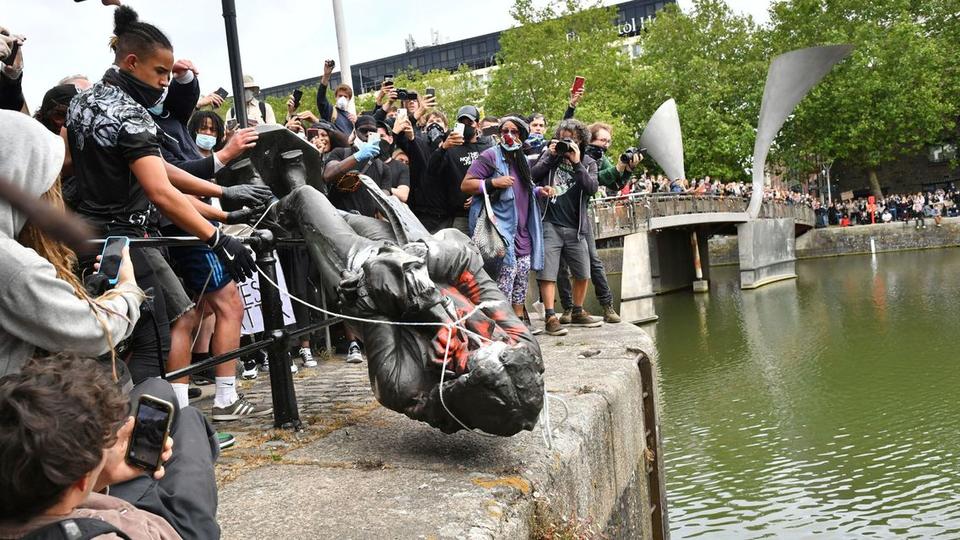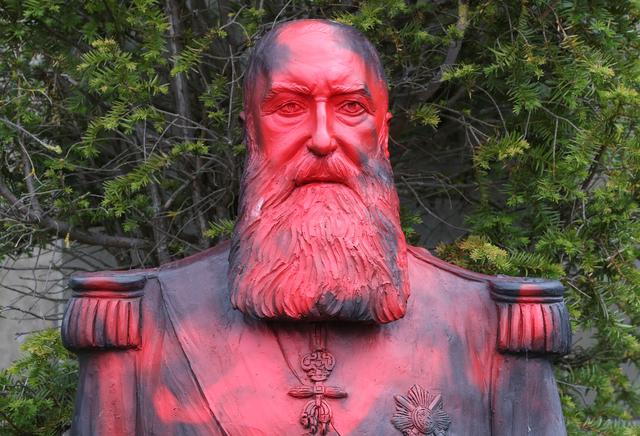For a fortnight now, the world waited with bated breath as the United States inched towards the brink of a revolution sparked by protests against the killing of George Floyd at the hands of a police officer. Citizens across the globe have come in support of the Black Lives Matter movement and these protests have gathered momentum across borders in the face of a global pandemic.
However, these protests gave way to a new casualty – reducing age old statues of political leaders like Gandhi and Churchill, slave traders like Edward Colston and monarchs like Leopold to dust.

In United Kingdom, the statue of Winston Churchill was defaced and “was a racist” graffiti was scrawled on the statue. Churchill is infamous for the man-made famine in Bengal that took the lives of four million people. Mohandas Gandhi’s statue was spray painted for he is infamously known to have believed that “black people are troublesome, very dirty and live like animals”. He also went on to write that white people should be “the predominating race”. In Belgium, demonstrators targeted the statues of King Leopold II in cities across the country. During his regime, he oversaw the exploitation and brutal colonization of the Congo in Africa. A petition to remove his statue has garnered close to 60,000 signatures. In the Belgian city of Ghent, a bust of the monarch was defaced with words painted in red that read “I can’t breathe.” In Brussels, the protestors chanted “murderer” as they waved the flag of Democratic Republic of Congo around a monument for the former colonizing king. In Bristol, United Kingdom, the protestors tore down Edward Colton’s statue. Colton joined the Royal African Company in 1680 and became the Deputy Governor of the company – which had the monopoly in England on trading in gold, silver, ivory and slaves along Africa’s west coast – in 1689. It is estimated that during the time he occupied a senior executive position, as many as 84,000 African men, women and children were transported by the company as slaves – 19,000 of which died during the journey to the Caribbean and the Americas. His statue was hurled into the city’s river where his ships once docked.

This practice of defacing statues has roots going as far back as the birth of Christianity. A close look at Egyptian statues will show you that most of the statues have their noses missing. With old sculptures, the wear and tear seems natural, but on 2D relief work a pattern seems to emerge suggesting that the action was deliberate. Upon research, one can find that Christians and pharaohs actually had a habit of vandalising artwork due to their culture of iconoclasm. The deliberate destruction of statues and monuments was a way of counteracting the cultural and political power of the image – a worldview that resonated across centuries. The ancient Egypt goddesses were seen as a threat and defacing their statues was one way to annihilate their immortality imbued in stone. When asked why the nose, it was reasoned that the nose is the source of breath, the breath of life – the easiest way to kill the spirit inside is to suffocate it by removing the nose. Colonialists across have used this advantage by defacing the memorabilia of the indigenous people and erasing years of history.
Iconoclasm refers to the destruction of images or hostility toward visual representations in general.
Specifically it arises out of the Iconoclastic Controversy that shook the Byzantine Empire for more than 100 years. Open hostility toward religious representations began in 726 when Emperor Leo III publicly took a position against icons; this resulted in their removal from churches and their destruction. Some historians believe that by prohibiting icons, the Emperor sought to integrate Muslim and Jewish populations. Both Muslims and Jews perceived Christian images as idols and in direct opposition to the Old Testament prohibition of visual representations. Another theory suggests that the prohibition was an attempt to restrain the growing wealth and power of the monasteries. Other scholars offer a less political motive, suggesting that the prohibition was primarily religious, an attempt to correct the wayward practice of worshiping images.
The prohibition resulted in a civil war that shook the political, social and religious spheres of the empire with the emperor and the clergy on two opposite ends.

The history of iconoclasm intermingles with struggles for power and the control of narrative. It gives the dissenters a space to register their anger tangibly. Today, protestors across the globe are using this to erase the immortality of their oppressors, the ones who traded lives for produce. They are initiating dialogues, holding leaders accountable of their racist past, unlearning centuries of colonial narratives and questioning the structural and institutional racism that has seeped into today’s civilization. They are tearing down the legacies of white supremacists that lurk in the shadows of today’s capitalism.
Written by -Tamma Moksha
Bibliography:
Literary:
- https://www.britannica.com/event/Iconoclastic-Controversy
- https://www.bbc.com/news/world-52963352
- https://www.hindustantimes.com/world-news/black-lives-matter-protests-winston-churchill-statue-vandalised-in-london/story-JgO1w5fAmeav3pyEYKj79M.html
Images
- APPhoto
- Reuters
- NewsBreak
